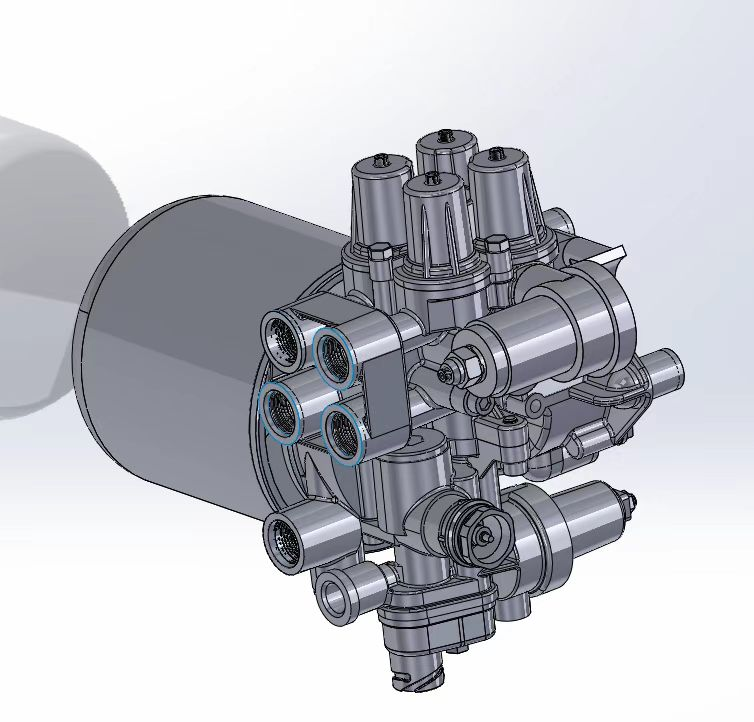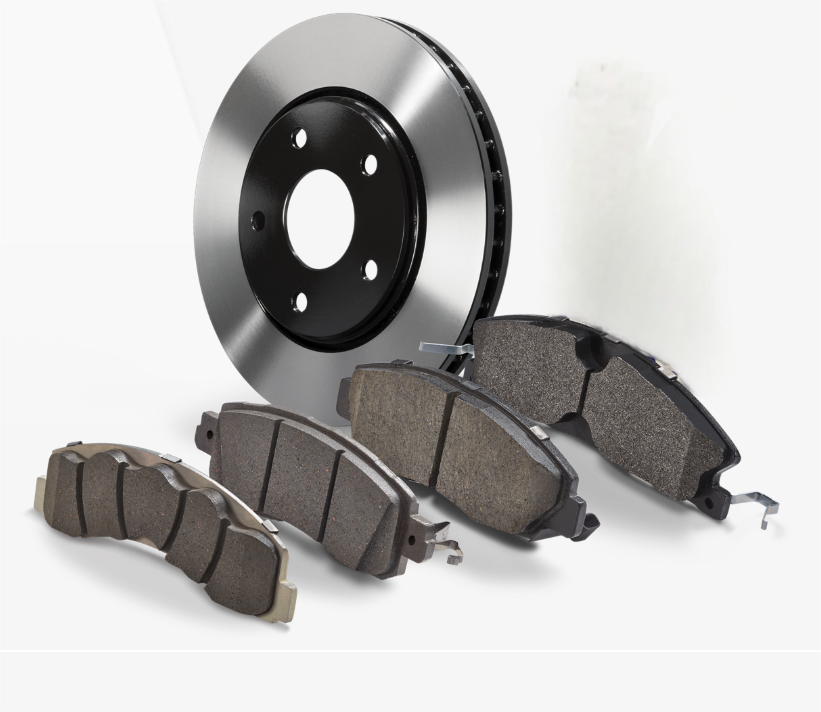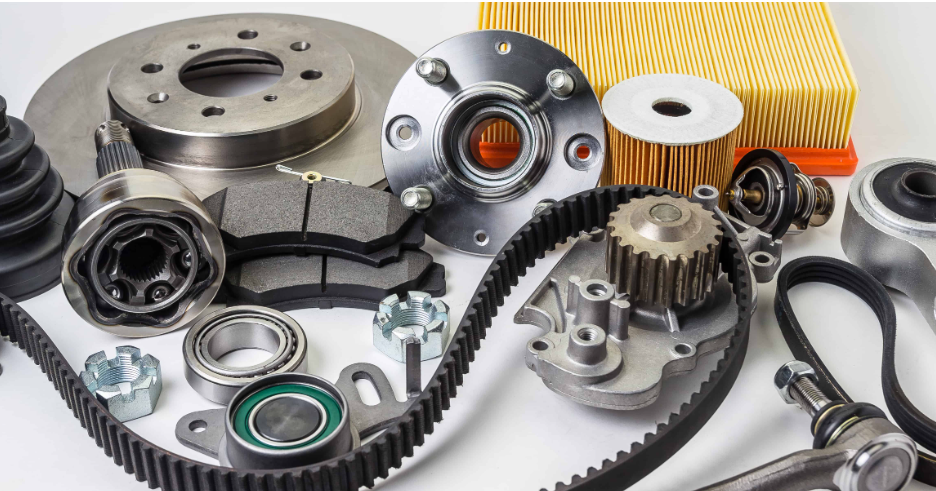Brake Pad Materials and High-Speed Performance
Understanding Brake Pad Composition and Material Properties
High speed braking systems today need materials that strike a good balance between how well they create friction and their ability to handle heat. Ceramic brake components mix copper fibers with ceramic particles so they can take temperatures reaching around 1200 degrees Fahrenheit without losing grip performance. The semi metallic pads work differently by incorporating iron and steel structures which help spread out heat quickly something that becomes really important when drivers hit the brakes repeatedly. For racing applications, sintered metal options are popular choice because these use tungsten matrices bonded under pressure. They maintain friction levels over 0.55 mu even at scorching 1600 degrees Fahrenheit, giving them about 32 percent better heat resistance compared to regular street brakes. This makes all the difference in track conditions where extreme temperatures are part of everyday operation.
Ceramic vs. Semi-Metallic Brake Pads: A Comparative Analysis
Track testing reveals distinct performance profiles (Table 1):
| Characteristic | Ceramic Brake Pads | Semi-Metallic Brake Pads |
|---|---|---|
| Friction Stability | 0.38–0.42 ¼ (steady) | 0.45–0.50 ¼ (initial bite) |
| Thermal Limits | 1,200°F before glaze formation | 1,450°F with <10% fade |
| Rotor Wear | 0.02 mm/100 stops | 0.05 mm/100 stops |
Semi-metallic pads excel in high-performance scenarios requiring rapid heat dispersion, though their 250% higher rotor wear rates demand more frequent maintenance.
Sintered Metal Brake Pads for Extreme Performance Under High-Speed Conditions
Used in professional racing, sintered metal pads maintain 0.55–0.60 ¼ friction coefficients at 1,600°F through layered tungsten-carbon structures. They deliver 18% shorter stopping distances than ceramics at speeds over 150 mph. However, their extreme hardness accelerates rotor wear by 300%, limiting cost-effective use to timed track sessions.
How Material Composition of Performance Brake Pads Affects Friction Levels
- Copper-ceramic blends: ±2% friction variance from 400–1,000°F
- Iron-heavy semi-metallics: 18% stronger initial bite than ceramics but suffer 22% friction loss after 10+ consecutive 1,000°F cycles
- Sintered alloys: ±1.5% friction stability across triple heat cycles (SAE J2682 standards)
Material density and metallic content directly influence heat absorption. Copper-enriched designs reduce pad glazing risks by 41% during sustained high-speed braking.
Heat Dissipation and Thermal Management in High-Speed Braking
The Science of Heat Dissipation in Brake Pads
Effective thermal management differentiates high-performance brake pads from standard variants. Braking from 150 mph generates heat exceeding 1,200°F—sufficient to warp inferior materials. Advanced compositions like sintered alloys use micron-level porosity to channel heat away from rotors, reducing thermal stress by 30% (Khatir et al. 2022).
Brake Pad Durability Under Heavy Braking and Repeated Thermal Cycling
Repeated high-speed stops subject pads to thermal cycling that fractures low-quality materials. Laboratory tests show vermicular cast iron linings withstand 500+ cycles of rapid heating (to 1,000°F) and cooling without warping, outperforming traditional grey iron by 22% in crack resistance (Liu & Wang 2022).
Measuring Performance at High Temperatures: Data From Track Testing
Track data highlights critical thresholds. Carbon-ceramic pads maintain 0.45–0.55 friction coefficients at sustained 700°F, while semi-metallic pads degrade beyond 600°F. A 2023 thermoelastic model of high-performance braking systems demonstrated 18% faster heat dissipation in drilled rotors versus solid designs.
Controversy Analysis: Do Ceramic Brake Pads Overheat Under Track Conditions?
Ceramic brake pads work great for regular road use, but track day engineers have noticed they take around 40 percent longer to cool down after racing compared to carbon-ceramic options. Some new research though is changing minds. Labs testing different ceramic mixes found adding graphene cuts down those scorching temperatures by about 215 degrees Fahrenheit during simulated ten lap races. This throws a spanner in the works for the old assumptions about ceramic performance. At the heart of the discussion sits a fundamental tradeoff between how quickly brakes grab when first applied versus how well they hold up under sustained high heat conditions over multiple laps.
Friction Stability and Stopping Power at High Speeds
Friction Stability Under Extreme Conditions and Its Impact on Control
Consistent friction coefficient stability is critical at speeds exceeding 150 mph, where pads must maintain 0.38–0.42 ¼ friction levels despite temperatures over 600°C to prevent modulation loss. Research on high-speed braking systems reveals carbon-ceramic composites retain 92% friction efficiency during 10 consecutive emergency stops, outperforming traditional semi-metallic designs by 34%.
Enhanced Stopping Power Through Optimized Brake Pad Materials
Advanced formulations balance compressibility and thermal conductivity to achieve 100–60 mph stopping distances under 350 feet in performance vehicles. Sintered metal pads with copper-backing layers reduce heat transfer to calipers by 28% compared to iron-based alternatives (SAE 2024), enabling faster dissipation while maintaining structural rigidity for immediate pedal response.
Real-World Case Study: Braking Performance in High-Performance Vehicles on Racetracks
Testing on GT3 specification vehicles revealed that ceramic composite brake pads cut down on lap time fluctuations by around 1.2 seconds at the famous Circuit de Spa-Francorchamps when compared against traditional semi-metallic options. Racers noted significantly better feel at the brake pedal throughout their 25 minute stints, something backed up by thermal scans which detected rotor temps dropping by approximately 150 degrees Celsius in critical braking sections. These results actually fall right within what the FIA considers acceptable for friction material stability, maintaining consistent stopping power even as temperatures swing from 400 to 800 degrees Celsius during competition.
Brake Fade Resistance and Long-Term Reliability
Understanding Brake Fade and Overheating Resistance Mechanisms
When brakes get too hot during long downhill stretches, they start losing grip on the rotors, which means reduced stopping power temporarily. Testing done last year simulated those tough mountain road conditions where drivers constantly apply their brakes. The experiment ran three separate five minute sessions at around 30 to 35 km/h with breaks in between for cooling. Cheaper brake pads saw nearly 40% drop in how well they worked compared to what they started with, whereas high end materials kept about 9 out of 10 of their original effectiveness. Organic based pads tend to break down because their resins melt away under heat stress. Semi metallic options experience different problems where the material just wears off against the rotor surface. But sintered metal pads hold up better since their bonding stays strong even past 650 degrees Celsius, giving them superior resistance to fading issues.
Heat Resistance to Prevent Brake Fade During Sustained High-Speed Driving
The carbon-ceramic mix is king in high performance setups because of its two part construction. The ceramic base keeps things cool even when temps hit around 1500 degrees Fahrenheit, and those copper wires woven through actually boost how well heat moves away from the contact point. Real world testing on racetracks tells us these brake pads stay pretty consistent too, keeping their grip strength within about 5% after multiple hard stops. That's way better than what we see with semi metallic brakes which tend to lose anywhere between 20 to 30% of their stopping power under similar conditions. What makes these pads stand out even more are the built in cooling passages combined with special adhesives that can handle extreme heat. Together they push back against thermal fade so drivers don't experience declining braking performance during those critical final laps of a race.
Industry Paradox: High Friction vs. Thermal Degradation in Semi-Metallic Pads
The semi metallic brake pads typically provide around 15 to 20 percent more friction right from the start compared to ceramic options. However these pads contain iron and copper which causes them to wear down faster when temperatures exceed 900 degrees Fahrenheit. What happens next is pretty problematic for drivers. The braking surfaces tend to develop this glossy coating known as glazing, and once that occurs the actual stopping power drops anywhere between 25 and 40 percent after being used for long periods. According to recent testing data from SAE International in 2023, almost 78 out of every 100 semi metallic pads tested on racetracks showed signs of this issue. For automotive engineers working on vehicle safety systems, there's really no perfect solution here. They have to decide whether to go with the stronger initial grip provided by semi metallics or switch to ceramic composites that might not perform as well at first but maintain better performance during longer journeys since they experience roughly half the fading effect over time.
FAQ: Brake Pad Materials and High-Speed Performance
What are the main types of brake pad materials used in high-speed applications?
The main types of brake pad materials used in high-speed applications are ceramic, semi-metallic, and sintered metal. These different materials offer varying levels of friction, thermal resistance, and rotor wear properties.
Which brake pad material offers the best heat resistance?
Sintered metal brake pads offer the best heat resistance, maintaining friction coefficients even at temperatures as high as 1600°F, making them suitable for extreme high-speed racing conditions.
How do ceramic brake pads differ from semi-metallic brake pads?
Ceramic brake pads tend to have a lower initial bite but maintain steady friction levels, excel in heat resistance, and have lower rotor wear compared to semi-metallic pads. However, semi-metallic pads provide stronger initial bite and better heat dissipation but wear out rotors faster and can suffer from performance loss over time.
Are ceramic brake pads suitable for track use?
While ceramic brake pads perform well for everyday driving, they can take longer to cool down after high-performance track conditions compared to carbon-ceramic options. However, advancements in materials, such as the addition of graphene, are improving their heat management capabilities for track use.
What is brake fade, and which pads offer better resistance?
Brake fade is the reduction in stopping power due to overheated brake pads. Sintered metal and carbon-ceramic pads offer good resistance to brake fade, maintaining effectiveness at higher temperatures compared to organic or standard semi-metallic pads.
Table of Contents
- Brake Pad Materials and High-Speed Performance
- Heat Dissipation and Thermal Management in High-Speed Braking
- Friction Stability and Stopping Power at High Speeds
- Brake Fade Resistance and Long-Term Reliability
- Heat Resistance to Prevent Brake Fade During Sustained High-Speed Driving
- Industry Paradox: High Friction vs. Thermal Degradation in Semi-Metallic Pads
-
FAQ: Brake Pad Materials and High-Speed Performance
- What are the main types of brake pad materials used in high-speed applications?
- Which brake pad material offers the best heat resistance?
- How do ceramic brake pads differ from semi-metallic brake pads?
- Are ceramic brake pads suitable for track use?
- What is brake fade, and which pads offer better resistance?







